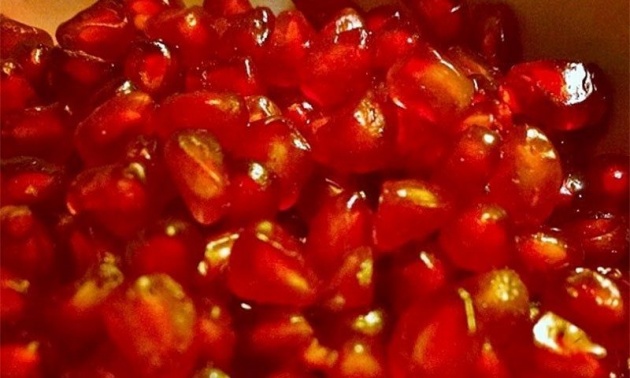Fairly nondescript on the outside, the inside is loaded with juicy scarlet-red coloured arils (seed pod) artfully arranged, using thin white membranes as dividing sheets. There is something both exquisite and majestic about the sweet and sour tasting pomegranate.
The ancient city of Granada in Spain agrees with this; an open pomegranate is the official symbol of La Granada, which was once known as Garnatah and was the last stronghold of the Muslim rule in Spain. Granada is, in fact, the Spanish word for pomegranate and the fruit grew abundantly in the region.
In 1492, when King Ferdinand and Queen Isabella conquered the city, they considered it to be such a significant milestone that a pomegranate was added to their coat of arms.
It is even said that after conquering Garnatah, Queen Isabella stood with a pomegranate in her hand and declared,
“Just like the pomegranate, I will take over Andalusia seed by seed.”
Pomegranates are not so easy to eat but they are both delicious and nutritious. There are many ways to enjoy this heavenly fruit which is native to the Middle East particularly Palestine, Lebanon, Syria, Iran, Turkey, and Afghanistan.
The Persian cuisine is perhaps the best known for its extensive use of pomegranate. Ash-i-Anar is a vibrantly coloured hearty soup comprised of pomegranate juice, lentils, meatballs, mint and various spices. Pomegranate syrup and crushed walnuts are stewed with pieces of chicken to create the rich and tangy stew Khoresht Fesenjan. Dried arils known as anardana are used as a spice in Iran, as well as in Pakistan.
In Palestine, aside from being enjoyed as a fruit, pomegranate seeds are found in salads and as garnish for desserts. In Turkey, pomegranate sauce is used as a salad dressing and to marinate meat. Pomegranate syrup is also used to make muhammara, a roasted red pepper, walnut and garlic spread which is popular in both Turkey and Syria.



